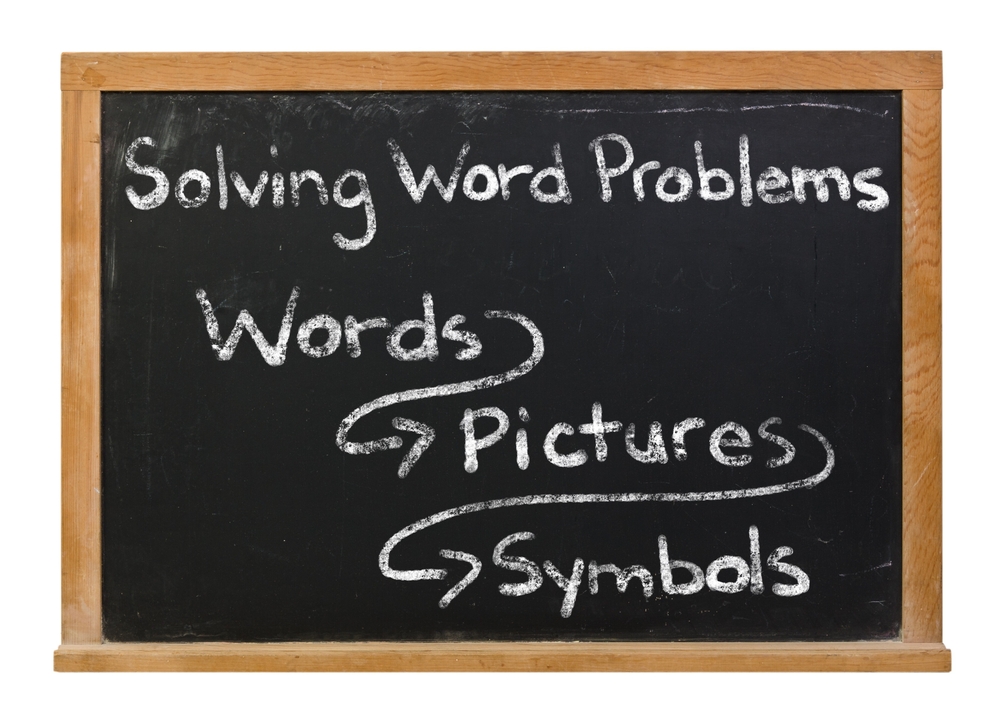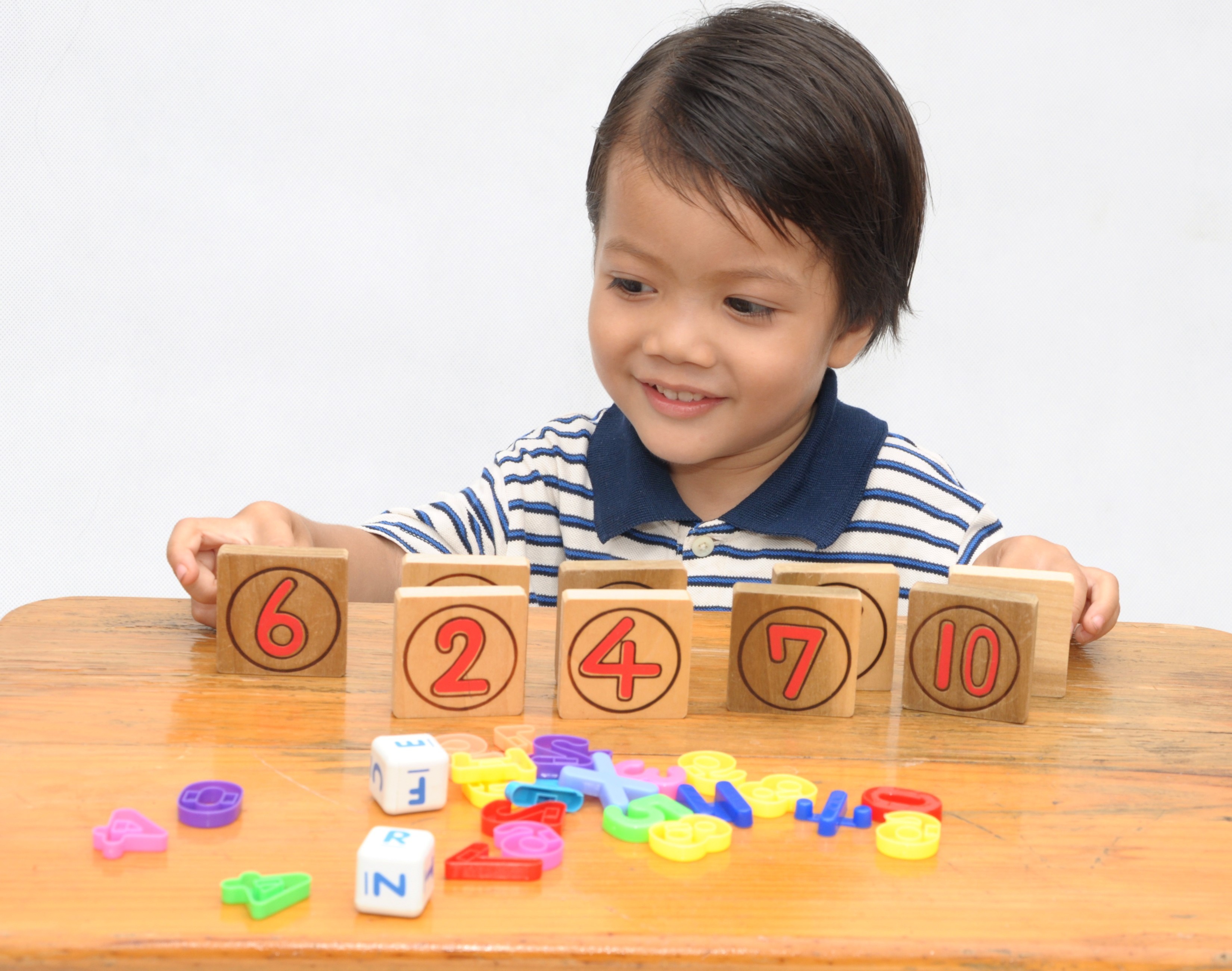Problem Solving Normal Addition & Subtraction Worksheets for Ages 3-6
7 filtered results
-
From - To
Explore our engaging "Problem Solving Normal Addition & Subtraction Worksheets" designed specifically for children ages 3-6. These interactive worksheets aim to build foundational math skills through fun and relatable problem-solving scenarios, making learning enjoyable. Kids will connect math concepts to real-life situations while developing critical thinking abilities. Our worksheets cater to various skill levels, encouraging independence as young learners practice addition and subtraction. Each page is brightly illustrated to captivate young minds and make math exciting! Perfect for homes or classrooms, these resources ensure that children not only learn math but also how to approach problems with confidence and creativity.
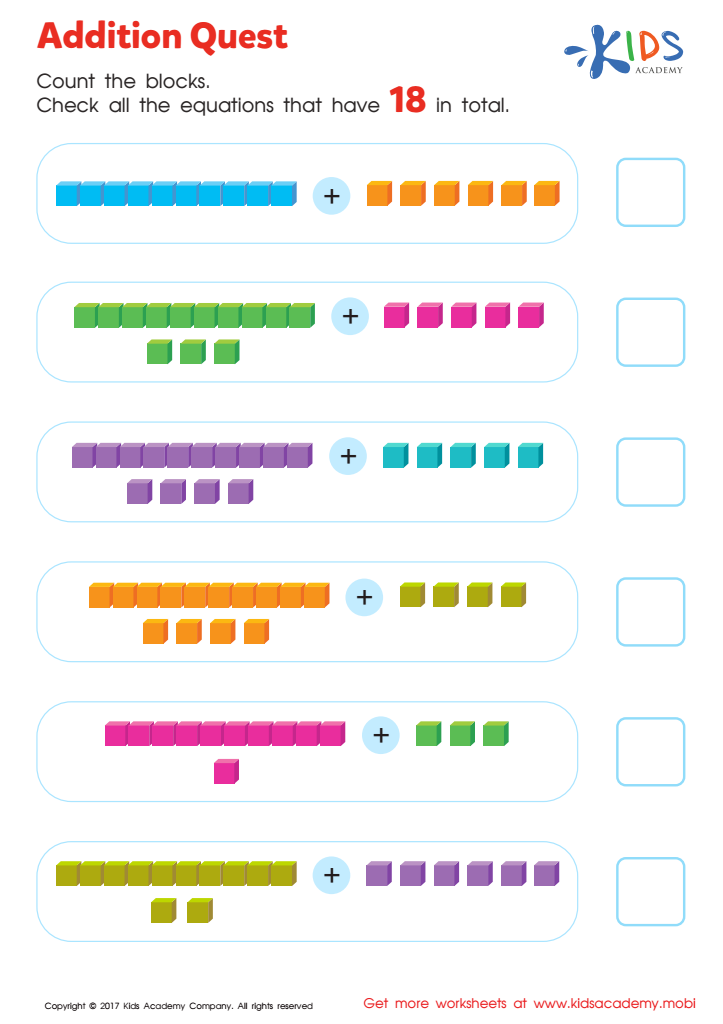

Addition Quest Worksheet: Part 2


Find the Rule Worksheet
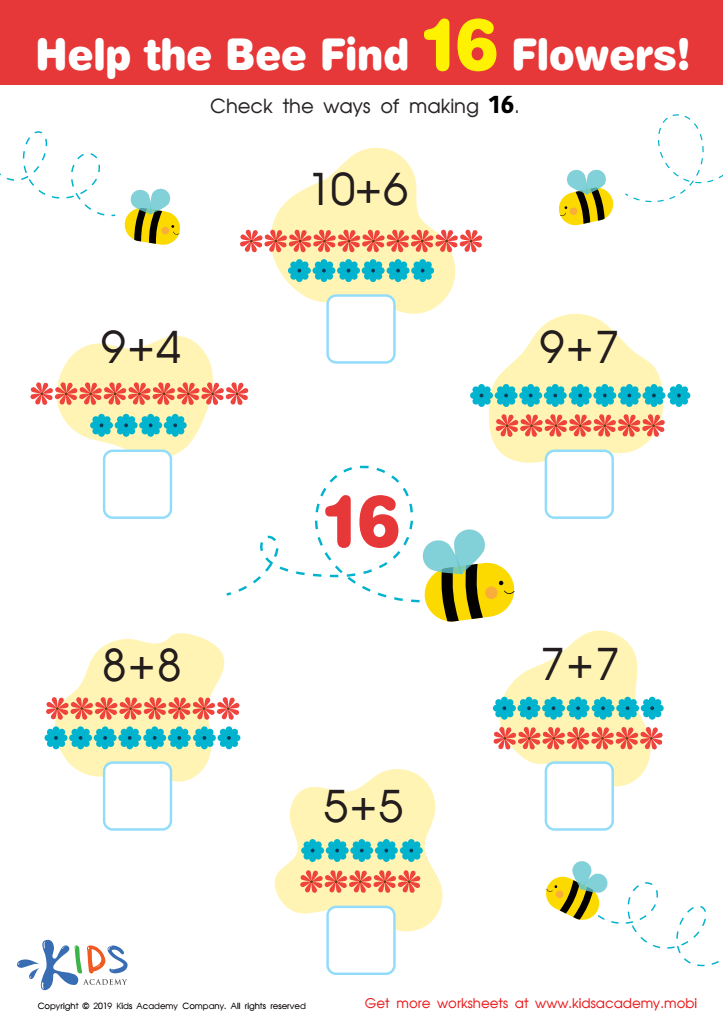

Help the Bee Find 16 Flowers Worksheet


Party Problems Worksheet
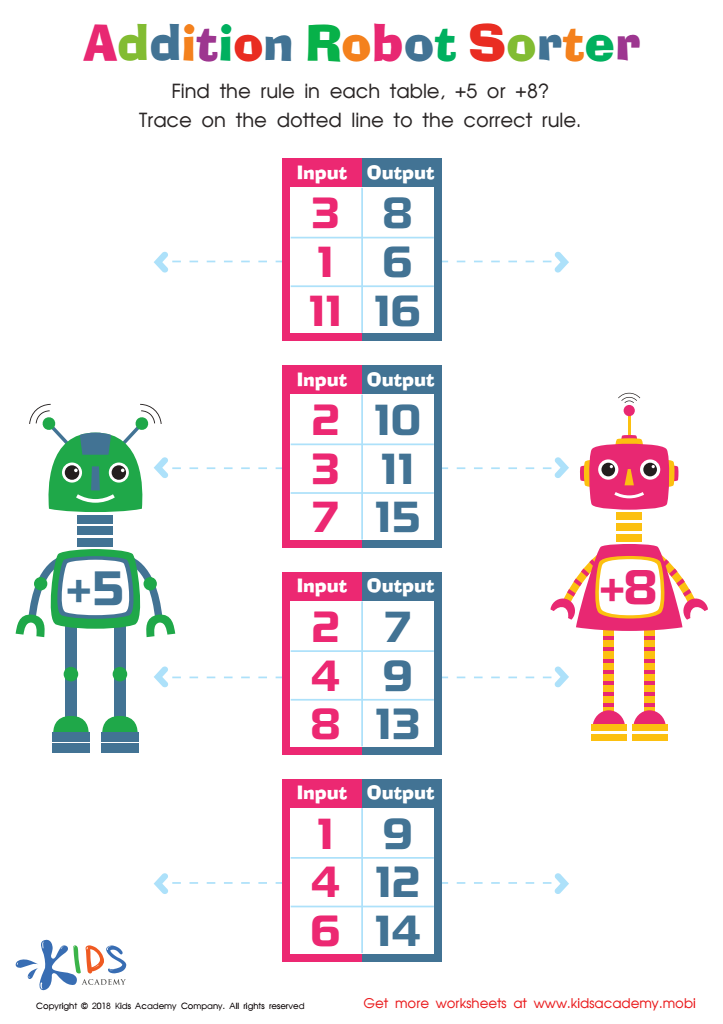

Addition Robot Sorter Worksheet
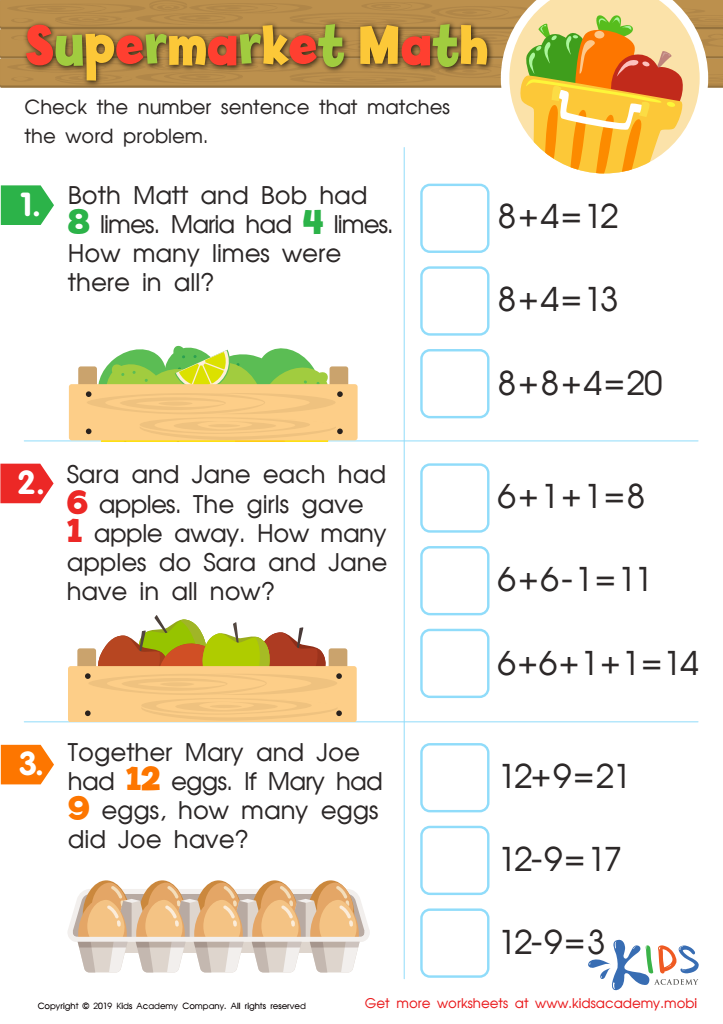

Supermarket Math Worksheet
Parents and teachers should prioritize problem-solving in normal addition and subtraction for children aged 3-6 because it lays the foundation for mathematical literacy and critical thinking skills. During these early years, children are naturally curious and eager to explore, making it an ideal time to introduce basic mathematical concepts through engaging activities. Teaching problem-solving with addition and subtraction helps children understand the concepts of quantity, number relationships, and arithmetic operations in a concrete way.
Moreover, fostering these skills encourages perseverance and resilience. When children face challenges and learn to navigate them through problem-solving, they gain confidence in their abilities and develop a growth mindset, which is essential for lifelong learning. These math experiences often occur in real-life situations, allowing children to see the relevance and application of math in everyday scenarios.
Additionally, engaging children in problem-solving activities promotes social skills, as they often collaborate or discuss solutions with peers or adults. This collaborative aspect helps enhance communication skills and emotional intelligence, which are crucial for their overall development. By focusing on problem-solving in early arithmetic, parents and teachers can contribute to well-rounded, confident, and capable learners who are better prepared for future educational challenges.
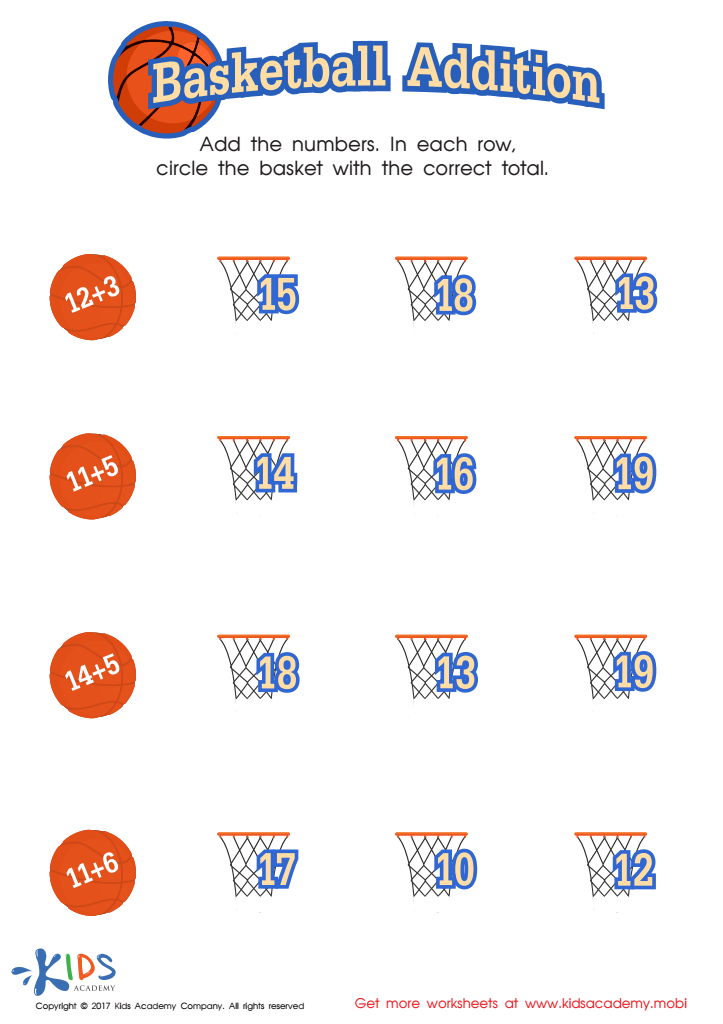
 Assign to My Students
Assign to My Students






